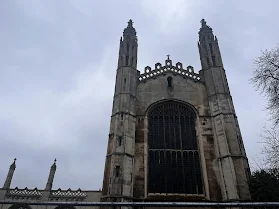Much like I did with Bristol, there are two parts to this blogpost.
A few days ago, I blogged about a college in Cambridge. This time, let's blog about some more...and other places.
As I mentioned in the last blogpost, Cambridge University was established in 1209, and quickly grew after that. By 1284, the first college opened, and now there are thirty-one. And as soon as you leave St John's, you can spot another one, their next-door neighbours.
Trinity
Trinity College is younger, being founded in 1546 by Henry VIII through the merger of two former colleges, though both had been much older, forming in the early 14th century. It's probably the most well known college, and is also the wealthiest by far (nearly doubling St John's in terms of assets), at about £1.34bn. It's even got the most University Challenge wins from the Cambridge colleges.
There's not much to see of it from the street, however, except for this ornate entrance. It's called the Great Gate, one of many in the city, and a statue of Henry stands in the middle of it. Curiously, though, he used to hold a table leg where a sword used to be, but sadly some people in suits decided to create a staff to put there instead due to the King's birthday last year. Above, the flag that displays the emblem of Edward III (king at the time of the two original colleges) fluttered in the sky, and various bikes were standing around, for this was a Monday and Cambridge is bike mad.
Gonville and Caius

King's College

The chapel, though, took many more years to complete, finally being finished by 1515 during the reign of Henry VIII, and one can't deny all that time was worth it. They said it was one of the best buildings constructed then, and it's not hard to admire now how intricate its design is in places. You're even able to visit the chapel - but I didn't have time to go inside.
More of Cambridge

Right round the corner is the Church of St Mary the Great. It's foundations have been around since 1010, though after burning down in 1290, was later rebuilt - the current church has stood for 550 years now. It's known as the University Church due to its association with Cambridge, and its patronage belongs to Trinity, of course. There's also the local market, which has been around in various forms since the Middle Ages. Various colourful tents standing at the foot of the church, with stalls selling food, art and various items. Open for six hours every day, it's far more interesting than the comparatively dull high streets, what with their Caffe Neros and university merchandise shops. There wasn't enough time to buy anything, though - we had to proceed onwards.



Comments
Post a Comment